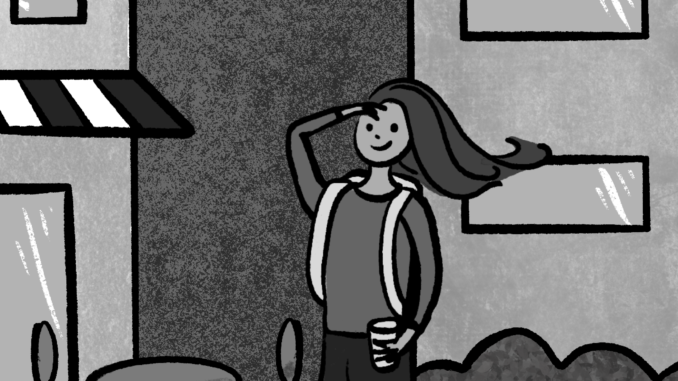
IF COLLEGE IS A setting meant to prepare people for their lives as adults, then urban campuses are vastly more suited to this task than suburban ones.
As a student who transferred to Lewis & Clark from Portland State University (PSU), I have had the pleasure of experiencing both types of campus and interacting with two different student bodies. The main differences that strike me are how students’ days are structured by their environment and how they formulate their self-image.
I will add, as a caveat, that I never lived on the LC campus. It will always feel alien to me in away that downtown Portland never will. My intention is not to bash our campus. After all, it has gorgeous scenery. The campus attracts and nutures a student body that is hearteningly kind, queer and enthusiastic about mushrooms and moss. I wish only to point out certain downsides that may not be apparent to those who have not experienced any other form of college.
LC is very much a bubble. It is not completely a “total institution,” a term created by sociologist Erving Goffman to describe places like prisons and monasteries where people live, work and play, secluded from the wider world, under strict rules prescribed by the authority of the institution. However, being a private college, it certainly has aspects of one. The “inmates” here eat together, study together, work, play and sleep together. Schedules are not all the same, but they share many commonalities and take place within the same small, confined area, under the same authority.
There is a regrettable and much- lamented dearth of food options on LC’s campus, where students’ only options are cooking something for themselves or buying food through the school. It is a sad comparison to the lively mishmash of food trucks, restaurants, coffee shops and bars sprinkled on and around PSU’s campus.
As for transportation, it is easy to be green when you are traveling in a city: You can use your own bike, a cheap eBike or scooter, the streetcar, the MAX Light Rail Service or a humble bus. Suburbs, on the other hand, are only possible because of the existence of cars. They are notoriously unwalkable. Students at LC can not take the pleasant 15-minute walk to the downtown Safeway to buy groceries, as I had the luxury of doing when living close to PSU. Instead, they are reliant — as always — on the school to provide for them. In this case, it provides transportation services via the Pio Express.
After a few years, students may get bored. A friend of mine, who as a senior has spent multiple years on campus, expressed that “I feel like I’ve done everything there is to do here.”
There is a greater variety of things to do and places to go when your campus is situated in a city. That city can continue to be your home even after your college days are over. For students of suburban campuses, though, college will remain separated from the rest of their lives, inaccessible except in memory.
Students of secluded suburban campuses are constantly surrounded by other students in a very narrow age range, often sharing similar viewpoints. In contrast, going to college in a city vastly increases the likelihood that students will interact with people from different walks of life. Maybe their roommates and co-workers are different ages, never went to college or come from a different socioeconomic background.
In a city, it is also easier to have a job that is not affiliated with the school. This can cause scheduling conflicts, but it can also be a source of autonomy. Crucially, that very sense of autonomy can feel rather cramped on a suburban campus, where every activity takes place under the oversight of the university.
Becoming an adult in Western society means growing into an autonomous individual. How are people supposed to learn how to do that when every choice — where to study, where to work, where to sleep, where to eat every meal — is laid out in front of them?
Removing these worries can make it easier for some students to focus on their studies. Learning how to juggle all the competing priorities in life can be difficult during and after college, especially for young people who are still figuring out themselves and the world in general. Students in cities have the choice of whether to look to school to provide for their needs, or to seek out solutions elsewhere. They have greater agency and flexibility in deciding how to structure their lives. Suburban students, on the other hand, have no option but to rely on their college.
It is easy to be engaged in so many different school-affiliated activities when on a suburban campus. There is not much else to do. This ease can allow for plenty of growth in students who are engaged on campus, and many years later they may look back on college as the best time in their life, a bucolic slice of spacetime where it was easy to be social and feel like they were making a difference. It is more than a little sad to lose that. What really matters in the end is the hard work of learning how to create that after college, when all people you meet and all choices you make are not structured according to college life.
Subscribe to the Mossy Log Newsletter
Stay up to date with the goings-on at Lewis & Clark! Get the top stories or your favorite section delivered to your inbox whenever we release a new issue.

Leave a Reply